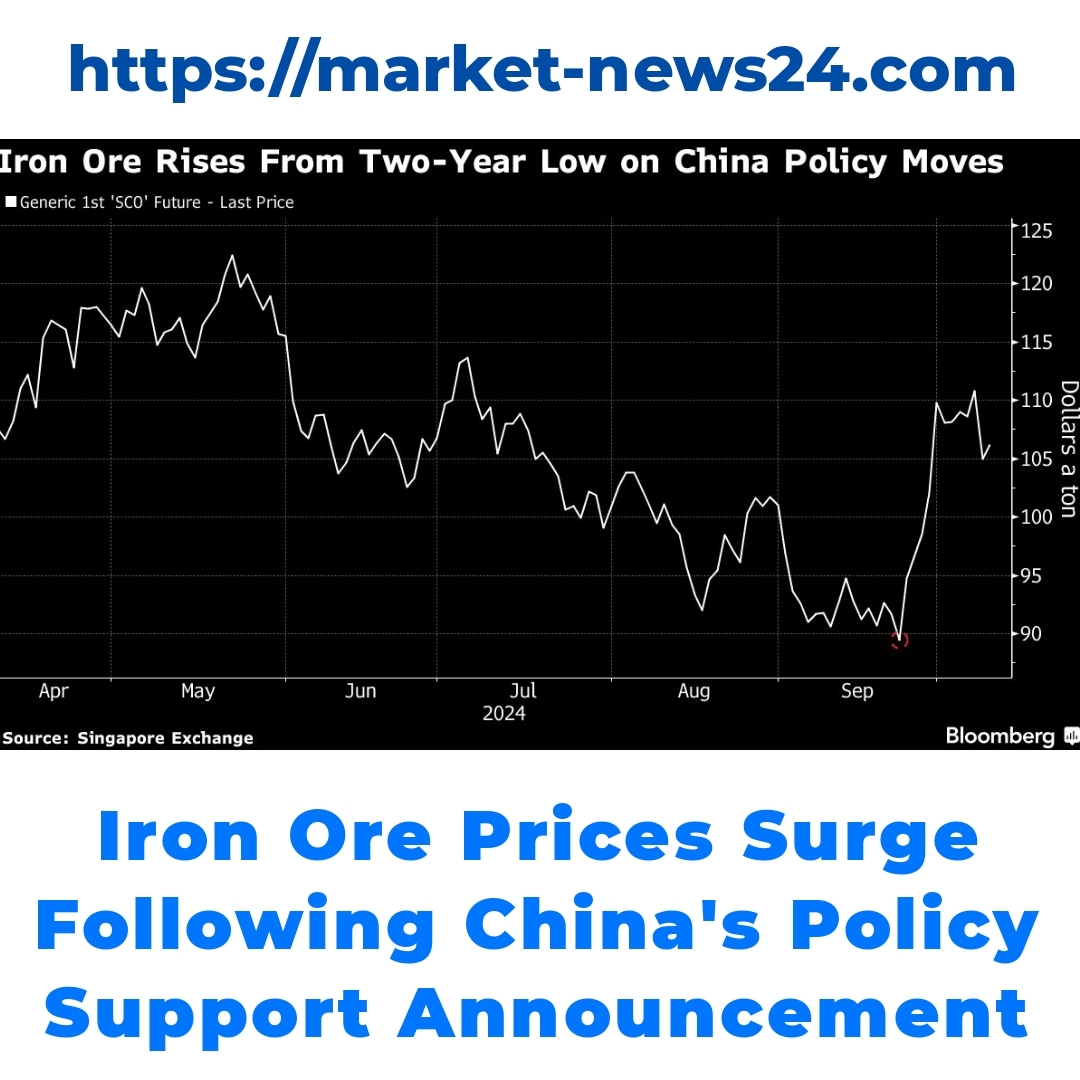The recent rebound in iron ore prices can be linked to China’s announcement of policy support aimed at boosting its economy. Following an initial disappointing address, market speculation surged, impacting trading patterns. This article explores the ensuing dynamics within the iron ore market and the implications of China’s fiscal measures.


Overview of Iron Ore Market Dynamics
The current state of the iron ore market has seen significant fluctuations in recent weeks. Prices have been swinging up and down as traders react to various economic signals. This volatility can be largely attributed to global demand and supply factors, including production rates from major exporters like Australia and Brazil. Additionally, the ongoing demand from China plays a crucial role in shaping iron ore prices, as it is one of the largest consumers of this commodity.
Iron ore is integral to China’s economy, particularly within its manufacturing and construction sectors. The metal is a key raw material for steel production, which, in turn, supports China’s massive infrastructure projects. Any changes in the availability or price of iron ore can directly impact these industries, affecting overall economic stability.
China’s Policy Support: Implications for the Iron Ore Market
As China announces its fiscal measures, investors are keenly interested in how these changes might influence the iron ore market. The expected fiscal stimulus could potentially result in increased infrastructure spending, driving up demand for iron ore significantly. Historically, similar measures in China have led to a surge in iron ore prices as the market reacts to the anticipated increase in demand.
Market speculation is particularly heightened following China’s recent economic briefings. Investors often form their strategies based on the tone and specifics of these talks. For instance, previous announcements have sparked rapid shifts in trading patterns, demonstrating how closely linked investor sentiment is to governmental policy statements.
Analysis of Fiscal Measures and Their Influence on Commodity Trading
When we look at the broader picture of government fiscal policy in China, it becomes apparent that certain measures may be on the horizon. Policymakers are likely considering strategies aimed at stimulating growth, especially in light of slowing economic indicators. These could include tax incentives, increased infrastructure spending, and support for struggling industries.
The implications of these fiscal measures for the iron ore market are significant. An aggressive fiscal stimulus might lead to a surge in construction and manufacturing activities, which would drive up the demand for iron ore. As the demand increases, so too could prices, providing opportunities for traders and investors looking to capitalize on these market shifts.
Investment Outlook: Navigating the Iron Ore Market
Current investment sentiment surrounding iron ore is cautiously optimistic. Following recent policy announcements, many investors are looking at the iron ore market with a renewed sense of interest. The potential for price rebounds due to China’s policy support has traders on high alert, weighing their options carefully.
For commodity traders, navigating the volatility in the iron ore market requires strategic insight. Focusing on technical analysis, understanding the underlying economic indicators, and staying updated on Chinese policy changes can provide traders with an edge. It’s essential to remain adaptive in response to market movements, especially given the tendency for rapid shifts following new fiscal announcements.
Conclusion
In summary, the recent rebound in iron ore prices can largely be attributed to China’s policy support, which sends ripples throughout the market. The anticipated fiscal measures have vast implications for the iron ore sector, likely driving demand upward. While market speculation surrounding these economic briefings could introduce volatility, savvy traders might find new opportunities to explore in iron ore trading. As we move forward, it’s clear that both current policies and investor sentiment will play critical roles in shaping the future of the iron ore market.
FAQ
What is driving the fluctuations in the iron ore market?
The fluctuations in the iron ore market are primarily driven by global demand and supply factors, particularly production rates from major exporters like Australia and Brazil. China’s ongoing demand for iron ore significantly affects prices as China is one of the largest consumers of this commodity.
How does China’s economy influence the iron ore market?
China’s economy relies heavily on iron ore, especially in its manufacturing and construction sectors. Changes in iron ore availability or pricing can directly impact these industries, thereby affecting overall economic stability in China.
What role do fiscal measures play in the iron ore market?
Fiscal measures announced by China, such as infrastructure spending and tax incentives, can significantly influence the iron ore market. Increased infrastructure spending often leads to a rise in demand for iron ore, which in turn can drive up prices.
How can traders respond to market speculation following China’s announcements?
Traders can respond to market speculation by closely monitoring the tone and specifics of government policy announcements. Adapting trading strategies based on these insights can help in capitalizing on anticipated market shifts.
What should investors consider when navigating the iron ore market?
- Focus on technical analysis and understand economic indicators.
- Stay updated on Chinese policy changes.
- Be ready to adapt to rapid shifts in the market following announcements.
What is the current investment outlook for iron ore?
The investment outlook for iron ore is cautiously optimistic. Many investors are showing renewed interest due to potential price rebounds influenced by China’s policy support, but they are weighing their options carefully amid market volatility.





